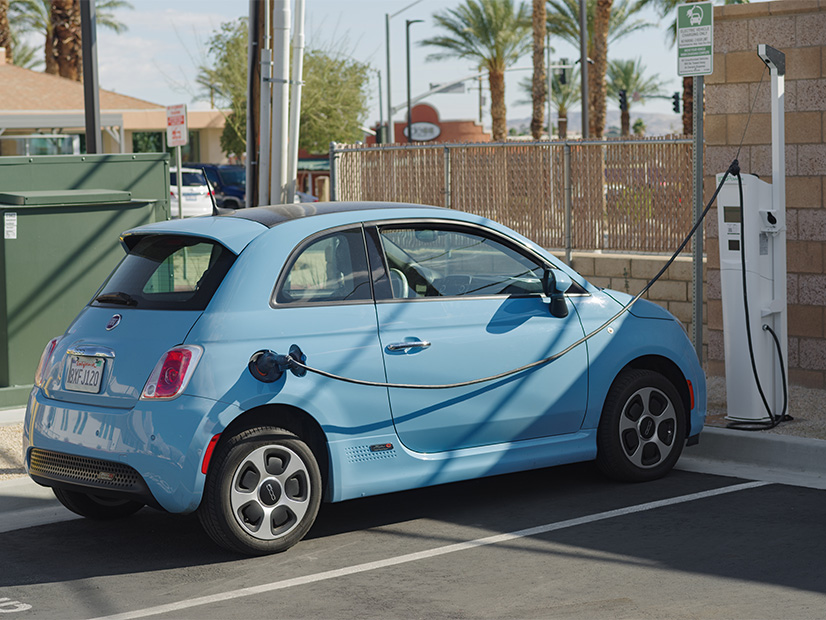
While California’s recently adopted Advanced Clean Cars II regulations are often described as banning the sale of gasoline-powered cars starting in 2035, the rule won’t eliminate internal combustion engines in new passenger vehicles.
The regulation, adopted by the California Air Resources Board last month, allows up to 20% of a car manufacturer’s annual ZEV requirement to be met with plug-in hybrid electric vehicles (PHEVs).
When asked about the rationale for allowing continued sales of PHEVs, which can run on gas as well as battery power, CARB spokesman Dave Clegern said the agency has estimated that about three-quarters of trips in plug-in hybrids will be electric.
“These are essentially electric cars with conventional motors for special circumstances,” Clegern told NetZero Insider.
To count toward the ACC II ZEV requirement, PHEVs must have a minimum battery range of 43 miles through model year 2028 and 70 miles thereafter. Clegern said the vehicles must also meet stringent emission standards and have a 150,000-mile extended warranty on emission controls.
Automakers will have to meet at least 80% of their ZEV requirement with pure zero-emission vehicles such as battery electric or fuel cell electric vehicles, Clegern noted.
Kathy Harris, a clean vehicles and fuels advocate at the National Resources Defense Council (NRCD), acknowledged that plug-in hybrids emit tailpipe pollution when they’re not in electric mode.
“But these vehicles may help drivers in the transition to a fully electric vehicle, in particular for demanding duty cycles such as towing,” Harris told NetZero Insider.
System of ZEV Allowances
The California Air Resources Board on Aug. 25 voted to adopt the Advanced Clean Cars II (ACC II) regulations, which are a follow-up to the Advanced Clean Cars I rules in effect now through model year 2025. (See Calif. Adopts Rule Banning Gas-powered Car Sales in 2035.)
Like Advanced Clean Cars I, ACC II will require automakers to provide for sale an increasing percentage of zero-emission vehicles in California each year. ACC II starts with a 35% ZEV requirement in model year 2026, increasing to 100% in 2035.
Advanced Clean Cars I uses a system of ZEV credits that is based on the electric range of a vehicle and other factors. Some ZEV models receive more than one credit per vehicle. In contrast, ACC II will use ZEV “values” rather than credits. One zero-emission vehicle will equal one value.
ACC II includes a variety of ZEV allowances, including early compliance values, interstate transfers and environmental justice values, to help automakers meet ZEV requirements.
Harris from NRDC said the ZEV allowances will be especially important to automakers in states where ZEV sales are not as strong as in California.
“However, it is important that regulations result in real zero-emission vehicles — and their benefits — on the road in the states that adopt the rules,” Harris said.
Limits on the use of the allowances, and their phase-out by 2031 at the latest, will help ensure that’s the case, she said.
Credit Conversion
Manufacturers will be able to convert excess ZEV and plug-in hybrid credits earned under ACC I to ACC II values by dividing the number of credits by 2.1. The converted credits may be used to meet up to 15% of an automaker’s ZEV requirement in model years 2026 through 2030. There’s also a cumulative allowance option for automakers to use the converted credits.
Early compliance allowances are another tool manufacturers may use to meet their ZEV quotas. The values may be earned in model years 2024 and 2025 if more than 20% of the light-duty vehicles a manufacturer provides for sale are ZEVs or plug-in hybrids.
Early compliance values may be used to meet up to 15% of an automaker’s ZEV quota in model years 2026 through 2028. The early compliance values cannot be transferred to other states.
In an arrangement known as “pooling,” an automaker may transfer excess ZEV values earned in one state that has adopted ACC II to use toward ZEV requirements in another state.
The values can only be transferred when the ZEV requirement has been exceeded in one state, and only used to fill a shortfall in another state. Pooled values can be used to meet up to 25% of a state’s ZEV requirement in 2026, decreasing by 5% each year through 2030. Pooling won’t be allowed after 2030.
EJ Values Introduced
Environmental justice values are another ZEV allowance available to automakers. On top of the value earned for providing the ZEV itself, additional value will be awarded when the manufacturer takes steps to help place the vehicles in disadvantaged communities.
One example is providing the vehicle at a discount to a community-based clean mobility program, such as a car share program. In that case, the EJ value is 0.5 for a ZEV and 0.4 for a plug-in hybrid. The discount must be at least 25% off the manufacturer’s suggested retail price (MSRP).
EJ values of up to 0.25 may be earned when a ZEV or plug-in hybrid initially leased in California is sold at the end of lease to a California dealership participating in a financial assistance program. The ZEV or plug-in hybrid must have had an MSRP of $40,000 or less when it was new.
And for model years 2026 through 2028, automakers may earn an EJ value of 0.1 for each ZEV or plug-in hybrid provided for sale with an MSRP of $20,275 or less for passenger cars and $26,670 or less for light-duty trucks.
The EJ values may be used to meet up to 5% of a manufacturer’s ZEV quota. EJ values can’t be used after model year 2031, and they can’t be transferred to another state.
In other provisions of ACC II, excess ZEV, plug-in hybrid and environmental justice values may be banked for use in future model years. But excess ZEV and plug-in hybrid values can only be used for the four model years after the year they were earned.



